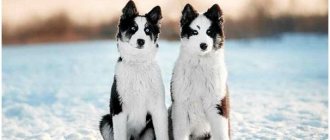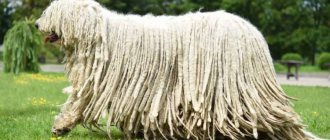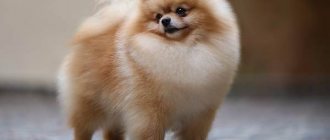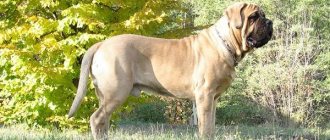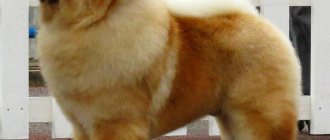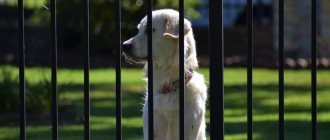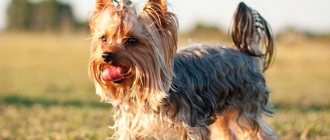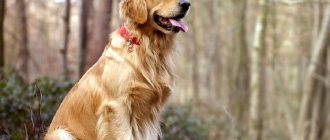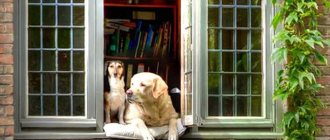There are dogs that are playful and active, there are dogs that are active and require attention, and there are those that you don’t even notice until they want to eat.
Knowing the workload of modern people, we can assume that many would be happy to have a pet, but there is not enough time, and the dog needs to be looked after, fed, walked and put in order.
So, there are dog breeds that will suit even the laziest and busiest people. The main thing is to love your four-legged friend and provide him with at least minimal care.
French Bulldog
Charming pop-eyed dogs not only look very cute, but are perfect for keeping in a city apartment. Their compact size, docile nature and lack of need for active walks and training make them ideal animals for lazy owners. At the same time, French bulldogs have a playful and kind character; they easily get along with all family members, including children. The only thing is that representatives of this breed have a weak respiratory system, so they often wheeze and snore loudly, and during a walk they experience shortness of breath.
Primary requirements
When choosing a dog for lazy or busy owners, you need to consider:
- character of the animal. Some lazy dogs can have an aggressive nature, so it is necessary to regularly monitor the situation and not give the pet slack. Otherwise, the owner loses authority in front of the dog;
- animal temperament. Just like people, animals can have different temperaments. For lazy owners, it is recommended to give preference to melancholic dogs. Such pets are in a calm state most of the time;
- pet size. Lazy dogs come in different sizes. The choice of pet depends on the size of the house or apartment. For small rooms, small breeds are selected that will not require much space;
- wool length. People who do not want to devote a lot of time to animals need to choose pets with short hair;
- gender of the animal. Female pets have a calmer character;
- age of the animal. Puppies require more attention and are usually very playful, so preference should be given to adults.
Note! Many purebred dogs with a calm character cannot tolerate prolonged loneliness. In the absence of owners, the dog may get sick and refuse to eat.
When choosing a dog, you need to consider its character
Chihuahua
Miniature lap dogs of this breed love to be the center of attention, they are cheerful and playful, and, despite their tiny size, they are very brave. Dogs of this breed are trainable, they have a stable psyche and a good disposition. Suitable for keeping even in small apartments, you can take them with you on vacation or on a picnic. Chihuahuas do not really like long walks; they can easily be trained to go to the toilet in a litter tray.
TOP 10 dogs for lazy owners
When people want to get a four-legged pet, they spend a lot of time and money trying to find a dog that suits their needs. However, a couple of months later, it turns out that the pet requires active walks, long and frequent walks and a lot of attention, and the owners are not prepared for this, and they begin to realize that keeping a dog is not just the joy of communicating with a devoted friend, but also a lot of trouble.
In addition to such basic items as shelter, food and water, a dog needs attention and regular physical and mental exercise. Elderly people, those who are busy at work and those who do not like long walks and prefer cozy gatherings at home want to choose a pet to their liking. Give them your love - and they will become more than companions, but true friends. Dogs lift your spirits and have a positive effect on your well-being. It has been proven that people who have a cheerful four-legged pet in their home are more stress-resistant and cheerful than lonely people. What is the ideal dog for a couch potato? – Peace-loving, sociable, unpretentious in care, not prone to dominance. Hunting breeds disappear immediately - they need serious physical exercise, the same can be said about large breeds - if you don’t exercise them, they will quickly begin to get fat. We bring to your attention the TOP 10 dogs for “lazy” owners.
10. Shiba Inu. It is also called Shiba Inu and representatives of this breed were brought to our country from Japan. This is a small dog with a cute face that makes it look like a soft toy. This is a friendly breed that only shows aggression on rare occasions. Active, cheerful, with an attractive appearance - Shiba Inu will become wonderful companions. The Shiba Inu is one of the smallest Japanese dogs; it was bred to hunt rabbits, birds, and otters. The Shiba Inu enjoys good health as it is a native breed with no major genetic problems. Sibs are very curious and at the same time independent, they need to be trained: once you establish a hierarchical position, you will show the dog who is the boss, and at the same time you will gain a loyal and obedient friend. No special care is required for your pet; it is enough to comb your pet once a week, clean its eyes and ears, and choose the right feeding diet.
9. Italian Greyhound. Representatives of this breed were the first dogs created specifically as pets. These are intelligent and friendly dogs that, despite their fragile physique, will accompany their owner everywhere. Cute Italian greyhounds are suitable for living in an apartment, have virtually no odor, and shed little. If we look at history, Italian greyhounds have been known since the time of the pharaohs - for many centuries these pets occupied a privileged position, they are smart and devoted dogs, and not at all pampered creatures. Caring for an Italian Greyhound is not too difficult: walks, regular cleaning of the fur with a special mitten, and if necessary, Italian Greyhounds can even be trained to use the litter box. Bathing pets is often not recommended - they have rather dry and sensitive skin, and in cold weather it is recommended to dress the Italian greyhound in a blanket or overalls.
8. Dachshund. This is one of the most popular dogs with a very recognizable characteristic appearance. Originally bred to hunt burrowing animals, the dachshund is now a wonderful companion that gets along well with children and pets. There are several subspecies of dachshunds, but all dogs are very active, cheerful and affectionate. It is believed that the ancestors of dachshunds were marriages that lived in Egypt, and the dachshund breed itself was bred by German breeders. Due to their body structure, Dachshunds are prone to spinal injuries, so exercise should be moderated and not allowed to run fast or climb up and down long stairs. Caring for dachshunds is simple: bathe them as needed, brush them with a mitten, regularly examine your pet's ears and eyes, monitor its diet - and the dog will become your faithful friend for many years!
7. Basset Hound. The literal translation is “low dog,” a low stance is a feature of this breed; in some ways, the hound’s body shape is similar to the structure of a dachshund. Basset hounds are also bow-legged, but this does not prevent them from demonstrating good hunting qualities. The history of this breed begins from the time of William the Conqueror; dogs not only hunted small game, but also searched for truffles - very valuable mushrooms - in the roots of oak trees. Purposeful breeding of the breed began in England in the 18th century; in Russia, the first representatives of this species appeared much later - in 1977. As a hunter, the Basset Hound is practically not used and is considered an excellent companion. Bassets have an even and calm character; keeping dogs does not pose any particular difficulties. As for health, pets have a genetic predisposition to rickets, and their eyes are also vulnerable. The breed does not require special care.
6. French bulldog. These are small decorative dogs with a very unique appearance, but they are easy to keep and are distinguished by their intelligence and easy-going character. The French Bulldog does not require special care; it also does not need a mandatory training course. These pets are playful, although at first glance they seem to be rather clumsy. There are still disputes between England and France about where this breed was bred; it began to spread throughout the world in the 19th century, mainly among the elite. The French Bulldog is a companion dog, easy to interact with people, friendly and practically non-aggressive. French Bulldogs have a weak respiratory system, so you don't need to subject them to excessive physical stress or go out in the heat, but otherwise they are hardy and sweet dogs that will bring you and your family a lot of pleasant moments.
5. Chihuahua. This miniature and cheerful dog loves to be in the center of events. She has a charming face with big eyes, a small but resilient body and an enviable mind. Chihuahuas are the so-called pocket dogs; they can not only be kept even in a small apartment, but also taken with you on a trip or for a walk. These pets do not like loneliness, are affectionate and very attached to their owner. Tiny Chihuahuas were spotted in Mexico in the 19th century, but scientists say the breed dates back to before our era and was considered a sacred animal. Chihuahuas do not require long walks; if desired, you can train your pet to use the cat potty. These tiny pets have a surprisingly stable psyche; excessive harmfulness and waywardness are alien to them. As for care, you can train your pet, but carefully ensure that it does not jump from great heights, ask your children to be more attentive to the dog, since there is a high probability of causing injuries through negligence. In cold and damp weather, the dog needs to be dressed, washed as necessary, and the eyes and ears examined regularly.
4. Japanese Chin. It is considered a rare variety of dwarf spaniel. This dog has an unusual, toy appearance and at the same time a huge sense of self-esteem and affection for its owner. The Japanese Chin can be kept in any conditions; it has a calm and balanced disposition and minimal aggression. It is believed that these tiny dogs were bred 3 thousand years ago in China - frescoes and drawings depicting similar individuals were found on the walls of temples. Translated from Japanese, “hin” means “treasure, value.” Chin was brought to Europe in the 19th century as a gift to Queen Victoria of England. Representatives of this breed appeared in Russia at the end of the 20th century. The Japanese Chin is similar to the Pekingese and Spaniel and is an attentive, understanding pet with a friendly personality. Once a day you need to comb your pet - he has a lush mane and a flowing tail, otherwise care is the same as for other dogs. He loves to play and run, but does not bother his owners. Hins are considered fearless, they are jokingly called “little samurai”; they do not bark, but make sounds reminiscent of singing.
3. English toy terrier. Small aristocratic dogs, combining energy and calmness, courage and grace, independence and devotion. Toy terriers can be kept even in a small apartment; they are clean and do not require special care. The terrier's coat does not emit a characteristic "dog" smell, does not mat, and terriers shed moderately. These are playful pets who can find a lot of activities for themselves even in the house. Toy terriers are not too fond of sitting on hands; they choose one owner, whom they will obey. In cold weather or in the rain, your toy terrier needs to go out in warm clothes; in hot weather, make sure that your pet does not get heatstroke - its black coat does not allow the dog to stay in the sun for a long time. The history of the breed begins in the 15th century, terriers were bred to hunt rats and rabbits, and the breed was improved in the 19th century. These are independent and proud dogs that need to be trained from an early age; be sure to accustom terriers to the company of other animals so that they do not show aggression.
2. Czech Terrier. These dogs have a very interesting appearance, they are calm, self-possessed, but at the same time playful and reckless. In the Czech Republic they were bred for burrow hunting, but are now used mainly as companions. These are intelligent and intelligent pets that do not take up much space in the house and get along well with other animals and children. This breed was bred at the beginning of the 20th century, the number of such dogs is still small, and sale is not available to a wide range of amateur dog handlers. Terriers can do without long walks, and as for grooming, it requires long, soft hair - it needs to be combed every day, otherwise tangles will appear. Since the Czech Terrier is a rare breed, consultation with a veterinarian regarding nutrition is necessary. An interesting fact is that gray and brown terriers give birth to black puppies, and as they grow older they fade.
1. Pug. The pug is one of the most famous breeds in the world; they have an interesting and colorful appearance: a folded and flattened muzzle, large bulging eyes, and a curled tail. Pugs are wonderful companions for busy people; they do not need active walks and are distinguished by their affectionate and good-natured character. Among the characteristics of the breed, it is worth noting possible health problems, so the rules for keeping pugs must be followed. Pugs are prone to allergies, problems with the respiratory and cardiovascular systems. The history of this breed goes back more than 2 thousand years; China is considered their homeland. The common name “pug” appeared in Holland in the 17th century. Gradually, the breed began to degenerate, it was re-developed thanks to Queen Victoria of Great Britain - she created a club for pug lovers. Pugs are somewhat noisy dogs, they need to be protected from stuffiness and prolonged exposure to the sun; special food is also recommended, since representatives of this breed are prone to obesity. Overall, Pugs are sweet dogs that will give you love and affection!
Japanese Chin
These toy-looking toy dogs were bred in Japan, and the name of the breed translates as “treasure, value.” Truly extraordinary dogs. They are very attached to their owner and have a balanced character. Manifestations of aggression or uncontrolled activity are practically alien to them. They love to run and jump, but will never bother their owners. Another plus in their favor is that chins are practically silent; they do not make barking, but rather sounds similar to singing. Because of this, they are often called "furry samurai."
Dachshund
Due to their short legs, you need to carefully select the level of physical activity for dachshunds: in their case, it is advisable to avoid even stairs. In addition, most representatives of the breed have short hair, which requires minimal grooming. Exotic lovers can choose a long-haired puppy. The only negative is the animal's high social needs. Dachshunds get bored if they don't get enough attention, which can lead to destructive behavior.
Dachshunds are very capricious, so you will have to come to terms with some of the character traits of your ward
Yorkshire Terrier
A decorative breed of small dogs originally from England. The charming Yorkshire dogs have a perky disposition, are intelligent and easy to train. They are often kept in small city apartments, because these miniature dogs do not need long walks and are easily accustomed to the house toilet. Due to the fact that they have no undercoat, they practically do not shed. But you will have to brush them at least once a day to prevent their long hair from getting tangled.
Saint Bernard
A breed of dog that has earned recognition among humanity for its skills in helping travelers in the cold. In the Alps, large and strong dogs still help to find lost travelers and tourists among the snow rubble. Large St. Bernards, real giants, with the same kind heart. These pets are gentle and friendly, despite their impressive size. A real family favorite. The downside of this breed is its excessive drooling, which not everyone will like. Saint Bernards are real sloths; a daily walk is enough for them as physical activity.
English bulldog
The closest relatives of French bulldogs are similar to them, but at the same time they are different. They have a more “severe” appearance, and their character is not as easy as that of the “French”. But they are very attached and devoted to their owner. English bulldogs will not jump on you to prove their love, and in general they cannot be called active. Slow, short walks a couple of times a day are enough for them. And they will never run away from their owner. And although their size is larger than that of French bulldogs, these dogs are quite suitable for small apartments, because most of the time they lie down in secluded places.
Basenji
The Basenji is the only dog that cannot bark. She will not disturb you with her ringing voice while you are resting. However, Basenjis can howl, so you will have to correct their behavior if bad habits appear. Please note that this breed is not for everyone. Basenji owners claim that their pets are more cat-like in character than dogs. These are playful and wayward pets who require active physical activity. But the Basenji has short hair, which is easy to care for.
The Basenji is considered a capricious breed, so if you are not ready for surprises in your pet’s behavior, you should prefer other options
Pekingese
Cheerful Pekingese are equally happy both at home next to their owner and on a walk. Affectionate, friendly and cheerful dogs do not require active walks or physical activity. Pekingese are not at all cowardly and it is even recommended to train them so that excessive manifestations of aggression develop into protective instincts. At the same time, they always treat the owners and “members of the article” in a friendly manner. Well, don’t forget about grooming!
To whom?
Any dog is a responsibility, therefore, if you have no desire to take care of an animal, care for it and spend your time on it, it is better to abandon the idea of purchasing one. But even if a person is ready to give the dog his love and attention, problems may arise with walks:
- for busy people . Many people have such a work schedule that you can’t take your dog for a walk. But the desire for love does not go away, and after a tiring day at the office, you really need to be greeted by a pair of touching eyes!
- for inactive ones . We are all different, for some it is not difficult to go for a run in the morning, but for others it is already an unbearable physical activity. If sports are not one of your interests, walking your dog may be too tiring;
- for the elderly . Getting a dog for a pensioner is a great idea; with such a companion it will not be boring. Dogs lift your spirits and leave no time for sad thoughts. But running a race, for example, with a dachshund, will be difficult for an elderly person. But your health won’t allow you to go for a walk every day;
- for a child . “I’ll go for walks myself” is the most common promise a parent hears from their child. But even if this promise is not forgotten in a week, it is difficult to let the child go for a walk with the animal, especially in the evening. In addition, illnesses, problems at school, the desire to hang out with friends will not go away - as a result, walking the dog may fall entirely on the parents;
- for lazy owners .
Yes, yes, this reason is also quite valid for getting a dog breed that does not need walking. Believe me, there are also homebodies among dogs who will gladly share a cozy sofa with you and will not find anything pleasant in a daily walk. For example, the Neapolitan Mastiff will happily snuggle up on the bed with you to watch a TV show (and drool all over it - a common problem with this breed), while French and English bulldogs also spend most of their lives snoring (which makes them prone to obesity).
By the way, some nursing homes hold meetings with volunteer dogs. Doctors note that motor activity improves in stroke patients
Chow chow
A great option for lazy owners, because these exotic dogs are also lazy. They love to lie around and doze on soft bedding. Many people say that Chow Chows are like cats in this regard - they only need a couple of hours of activity a day and 15-20 minute walks, and the rest of the time they doze and rest. Chow-chows are dogs with a difficult character, they are smart, stubborn and serious, but if you find the key to them, they will respond with affection and gratitude.
Medium breeds
These are not such small dogs anymore. They weigh from 15 to 30 kg.
Basset Hound
The sad eyes of these dogs seem to reflect their reluctance to be active and train for a long time. They are talented hounds, very social and easy to talk to. They are also very independent and not very trainable. Although food is the strongest motivation for them.
Chow chow
The majestic Chow is very noble. He is a real security guard and watchman who bravely protects his home and family members. He's also handsome, stocky, and a bit like a bear cub. Especially when he snorts peacefully near the front door, ready to wake up at any moment and bark at the slightest sign of danger.
Mastiff
Source
It's not just tiny dogs that are suitable for inactive owners. The impressive size of mastiffs is also suitable for keeping in apartments and small houses. They are also called “gentle giants” because mastiffs love to curl up on the couch. These are calm, friendly dogs with a balanced character. They do not need active games or walks; large amounts of physical activity are contraindicated for them. A couple of walks a day for 20-25 minutes will be enough for them.
Greyhound
Greyhound dog in the list of ten best dogs for lazy owners?! Yeah, live and learn. Yes, greyhounds are very fast over short distances, but their energy does not last long. In fact, for their unusual combination of high speed and love of lounging on their pillows, they were even nicknamed “high-speed lazy people” or “sofa potatoes.” Greyhounds have been living and hunting with humans for a very long time; mentions of them are found even among the ancient Egyptians and Greeks. What do greyhounds need for a happy life?
The space requirement is small. Yes, this is a really large breed (height is approximately 70 cm and weight is 26-40 kg), but these dogs also feel comfortable in small spaces. Generally, Greyhounds are quiet, gentle animals and are more suitable as an apartment dog than smaller, more active breeds.
The need for training is rather small. Greyhounds are quite obedient and get along well with strangers, school-age children, and other dogs. You may have to train them to behave well around small children and small animals.
The need for physical activity is low to moderate. Yes, Greyhounds are excellent sprinters and enjoy running, but they don't need regular exercise. Walking 20-30 minutes every day will help older dogs stay healthy.
The need for grooming is small. Greyhounds have short, soft fur and no undercoat. These dogs are suitable for people with allergies.
Disadvantages: Increased skin sensitivity and sensitivity to extreme temperatures.
More information about greyhounds:
Pug
Source
Pugs look funny and delight owners not only with their original appearance, but also with their cheerful character. They are very kind and sociable creatures, they love to have fun and play with their owners, but will not bother them. Most of the time they sleep or lie quietly in their place, but sometimes, more often when they are young, they have bursts of activity. After running and frolicking, pugs calm down and behave sedately again.
Shar Pei
Very little is known about the origins of these dogs. Presumably, they appeared during the Han Dynasty. It was only in the 19th century that they attracted the attention of European travelers and were taken to the Old World. And the breed was registered only in the middle of the twentieth century.
The character of Shar Peis is calm and independent. They are loyal to their owner, but are wary of strangers. Grooming for these dogs is minimal. They need to be washed once a month, and their nails trimmed and ears cleaned weekly. Shar Peis adapt well to their owner's daily routine. They happily walk around the park and are content with short walks.
Boston Terrier
These dogs are often called "American gentlemen": firstly, because of their black and white coloring, similar to a tuxedo, and secondly, because of their politeness. Your neighbors won't even know that you have a dog - these terriers are so quiet. They are truly well mannered, low maintenance and easy to train. But don’t offend your dog just like that. If you yell at a Boston Terrier for no reason, a very eloquent expression of resentment appears on its face.
Liked? Be sure to follow us on , , Zen and
Partner news
Puggle
The Puggle is considered a young mixed breed. She was obtained by crossing a pug and a beagle. The Puggle may be born from direct breeding or in the second or third generation. They do not require much grooming and can make excellent pets. What do puggles need?
Space requirements are low. Puggles are quite small (height 30-35 cm and weight 10-12 kg), and they are quite comfortable in houses and apartments.
The need for training is low. Puggles are very balanced and cheerful. On the one hand, they are strong and playful animals, and on the other hand, they are loyal and tactile. They get along well with everyone, including other pets and children. Puggles love to please their owners.
The need for physical activity is rather low. These dogs also have energy for training - their relationship with beagles makes itself felt, so periodic walks on the street or games in the yard are most suitable for them. On the other hand, due to the shortened nasal cavity inherited from Pugs, prolonged and vigorous exercise is prohibited because it can lead to problems with breathing and body temperature control.
Grooming requirements are low to moderate. Puggles do not require extensive grooming, but they do shed quite a lot, especially in the spring. They may also need periodic cleaning of wrinkles depending on how much they inherited from the Pug.
Disadvantages: Due to their shortened nasal cavity, puggles are slightly more prone than usual to heat stroke.
Bullmastiff
Even though it is a good-natured type of dog, the Bullmastiff is good at being a guardian for its family. Outwardly, it is clear that the Bullmastiff has a large build and is a large dog that can be an impressive obstacle to thieves and robbers. Despite being a guard dog, the Bullmastiff can be a family-loving pet that is noble, trustworthy and reassuring.
The dog's short coat makes it easier to groom, although he may drool. In addition, the wool does not shed much, so it is easy to clean. The Bullmastiff is not a very energetic dog, although he has a lot of energy when young. For training, simply take your pet for outdoor play or short walks to keep him fit and healthy. When training your Bullmastiff at an early age, make sure he understands that you are the head of the family to make later training easier, as well as curb his independence.
Newfoundland
Think of the Newfoundland as a big teddy bear, as well as a gentle giant, thanks to their cute, sweet, friendly and friendly personality. Preparing them for social life is a must, so try to surround them with different people, challenges, sounds and sights. Proper socialization training will result in a well-behaved dog.
The Newfoundland requires a spacious home environment, is prone to drooling, has a thick coat that requires regular grooming, and grows luxuriantly in cold climates. If you want to train a Newfoundland, you may need some positive support. Finally, you may notice that this dog is the same breed as Nana from Peter Pan, who was the Darling family's nanny.

